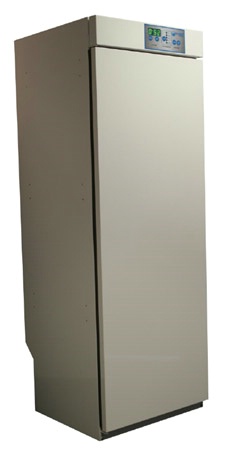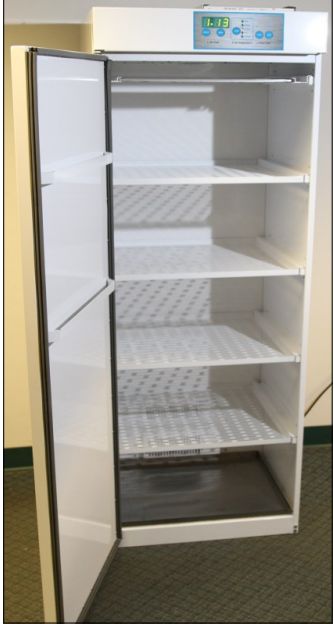Home » Hospital & Durable Medical Equipment » Balance Patient Comfort and Safety Using Blanket Warmers » Balance Patient Comfort and Safety Using Blanket Warmers
Balance Patient Comfort and Safety Using Blanket Warmers

5 Shelf Economy Commercial Drying Cabinet
Retail Price: $14,288.98
Your Price: $10,415.00

Medical Device and Tube Drying Cabinet
Retail Price: $6,722.98
Your Price: $5,786.15
Blanket Warming Cabinets
Blanket warming cabinets are used in hospitals to heat the blankets for the comfort of the patients. These also help maintain the body temperature of the patients after a surgical procedure. Blanket warming cabinets also help to provide a better patient care at various levels. These can be used to reduce both physical as well as psychological stress caused due to a surgery.
Physical Benefits
Patients need to be pre-warmed before a surgery. There are cases when general anesthesia caused shivering in patients and when the body temperature of the patients dropped below the normal levels. Thus, use of warm blankets becomes essential in the procedures that include anesthesia. The body temperature of some patients also decreases during the surgical procedure. A warm blanket can be placed over the patient during the surgery to maintain the warm temperature of the body throughout the surgical process.
The temperature-drop if not maintained can even result in post surgical complications, prolonged hospitalization, increased risk of infection and patients can also take more time for recovery. Though hypothermia can be preventable but it is one of the most common complications that arise during surgeries. Blanket warming cabinets can be used to prevent hypothermia along with the use of other warming solutions.
Psychological Benefits
By using pre-warmed blankets in surgeries, you are prepping up the patients for the procedure which benefits them psychologically. Undergoing a surgery can be quite an intimidating and a stressful experience for a patient and this can at times cause physical reactions like shivering. By using a pre-warmed blanket, the shivering in the patient can be reduced or in many cases prevented and provide them with a lot more comfort and a sense of protection.
Imagine a nurse taking out a pre warmed blanket from the cabinet and placing it over a patient. The patient in such a case is confident about the genuine concern of the nurse.
Hence, along with the physical benefits, by the use of blanket warming cabinets in hospitals, you can reassure your patients that the doctors and nurses genuinely care about their patients’ well being.
A number of hospitals put blanket warming cabinets to use and in many cases, this happens with a little or utmost no understanding of the clinical studies. There are a number of misconceptions surrounding the same. Let us try and understand more about them.
Mixing of Blankets and Fluids
In most cases, blankets are warmed to a temperature of 150-200 degrees Fahrenheit for effective heating. When fluids are heated along with blankets, they cannot sustain the high temperatures and the effective life of the IV solution decreases. In case of fluids, injection fluids are normally warmed at a temperature of 104 degrees Fahrenheit and the irrigation fluids to a temperature of 150 degrees Fahrenheit. Warming blankets along with the fluids can also cause ill effect on the fluids as the convection heat over warms the fluids and reduces the effectiveness. If you wish to warm both -blankets and fluids, you will have to use the dual chamber warming cabinets.
Over Stuffing the Compartment
To make sure that the blankets are warmed evenly, there needs to be air space around all the compartment edges. If you overstuff, you will eventually decrease the warming value of each blanket in the blanket warming cabinet.
“Anything Placed On the Bottom Shelf of Warming Compartment Catches Fire”
Such signs can be seen on the old warming cabinets and this can really be disturbing. So, will blankets really catch fire if placed on the bottom shelf? Not really.
The advanced warming devices have temperature regulations of +/- 2 degrees Fahrenheit so that the nurses or the doctors know what they are offering their patients.
The Blanket Warmer Cabinets – Safety and Precautions
It is of utmost importance to know and follow the recommended procedures and the guidelines when the blanket warmers are used. The recommendations include the temperature, the time to warm the cabinet and storage.
- IV fluids should never be warmed in the same cabinet that is used for warming blankets.
- Solution bottles or IV bags are not to be used as the patient warming devices.
- Make sure to check the temperature of the cabinets at regular intervals and document the same on a record or a log.
Though there are no specific guidelines for blanket warmer cabinets, the recommended warming temperature is 130° F as it reduces the risk of patient injury. The recommendations can vary depending on the manufacturer of the warming cabinets.
The Benefits of Blanket Warming
There are various benefits when the blanket warming cabinets are used correctly. Warmed blankets:
- Help maintain Normothermia
- Reduce the shivering and vasoconstrictions
- Help prevent chances for SSI ( Surgical Site Infection)
- Provide additional comfort
- Aid in faster recovery
A blanket warmer or a warming cabinet refers to the same equipment. Blanket warming cabinets can be used in hospitals for patients’ comfort but utmost care needs to be taken while maintaining the temperature of the cabinet and when applying the blanket. Nurses and doctors using the blanket warming cabinets have to be educated on the safe blanket temperature and as to how the hospital staff can balance the comfort and the safety they provide to the patient.














